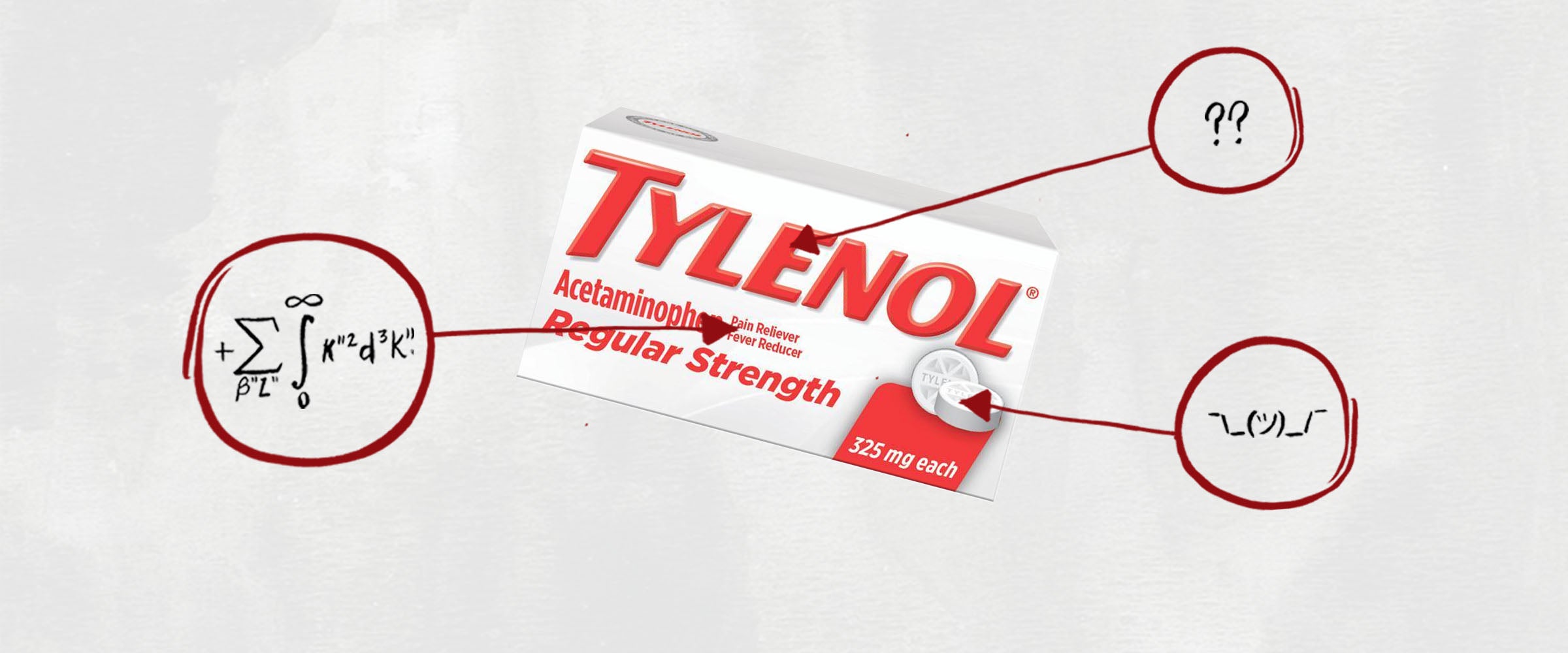We’re often told that you should never eat anything (or put anything on your body) if you don’t recognize everything on the ingredients list. But since most of us have no idea what xanthan gum or potassium benzoate are — or more importantly, what they’re doing to our bodies — we’re decoding the ingredients in the many things Americans put in (and on) themselves.
This edition: Regular Strength TYLENOL, which is made from six separate ingredients that we’ve broken down in the exact order they appear on their website. (For the record, Regular Strength TYLENOL contains 325 milligrams of the pain-relieving active ingredient acetaminophen, whereas Extra Strength TYLENOL contains 500 milligrams, and that’s the only difference.)

The Ingredients
1) Acetaminophen: Acetaminophen is the only active ingredient in Regular Strength TYLENOL, and it works by blocking the production of chemical messengers called prostaglandins, which send out pain signals and induce fever when we get hurt or sick. Prostaglandins are also known to promote inflammation and swelling; however, unlike ibuprofen, acetaminophen doesn’t reduce inflammation — it only reduces the intensity of painful signals associated with that inflammation. Therefore, ibuprofen (like Advil) is usually a better bet when dealing with muscle aches, as opposed to headaches or fever, due to its anti-inflammatory properties.
Interestingly enough, recent research seems to suggest that acetaminophen might also reduce pain associated with social rejection; however, more studies are needed to confirm this. That would be tight, though.
2) Magnesium Stearate: Magnesium stearate is a fine white powder frequently used as a release agent, meaning it prevents the various individual ingredients in these tablets from sticking to each other (and the machines) during production.
3) Modified Starch: Modified starch, which is most likely derived from either corn or potato, serves many purposes in the pharmaceutical industry. In this case, however, it probably helps these tablets dissolve so your stomach can easily absorb the acetaminophen.
4) Powdered Cellulose: This is made by cooking raw plant fiber in various chemicals to separate the cellulose. It makes up the bulk of these tablets and prevents clumping by blocking out moisture.
5) Pregelatinized Starch: Pregelatinized starch is starch (which again, is most likely derived from either corn or potato) that’s been cooked, dried and then ground into a powder form. It’s easily digestible and serves, more or less, the same purpose as modified starch.
6) Sodium Starch Glycolate: Yet another starch, sodium starch glycolate quickly absorbs water, which again, helps these tablets disintegrate quickly in your stomach.
The Takeaway
All in all, Regular Strength TYLENOL is a standard pharmaceutical tablet used as a carrier for acetaminophen. It does what it says it does, and if you have a headache or a fever, TYLENOL is a good choice.
I’d end this on a zinger, but I’ve got a headache.

